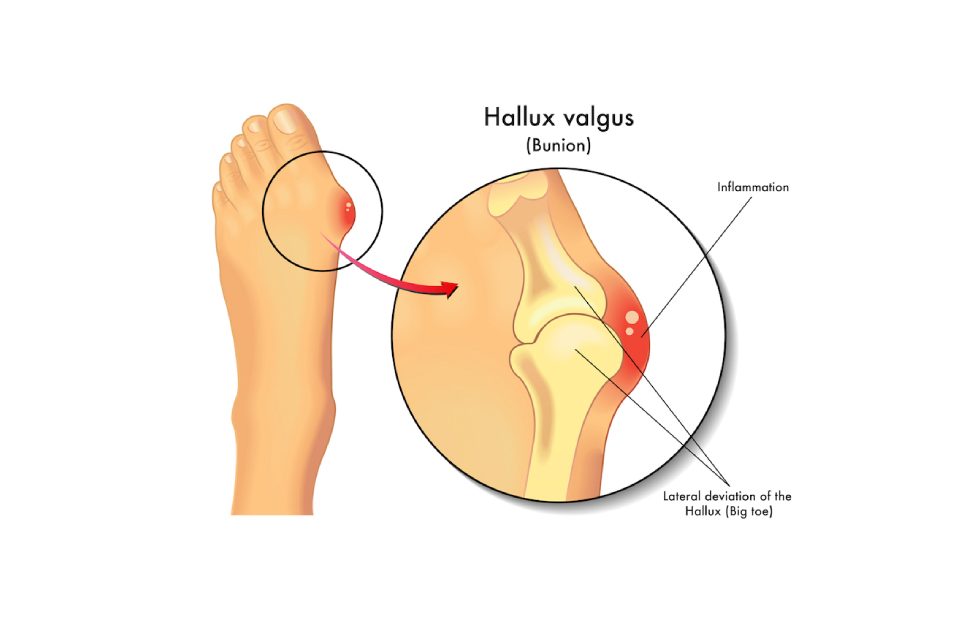- Have any questions?
- +91-9811443717
- [email protected]
Foot bunion- who gets it and why?

How to become stronger even after an ankle sprain for faster recovery?
April 1, 2021
5 ways to ease bunion pain without surgery
April 19, 2021Foot bunion- who gets it and why?

The structure of a foot consists of many joints arranged so that this structure can withstand the pressure of the entire body weight. But sometimes, you may notice a bump on the big toe. Is it normal or an indication of a foot problem? Well, it is not a normal thing that you should ignore. It can be a prime symptom of a foot bunion. But what exactly is it and how it develops? We will discuss such points.
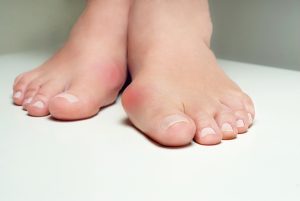 Bunion- bump on the big toe.
Bunion- bump on the big toe.
It is a bony formation on the big toe’s joint (the base) that looks like a bump. The tip of the big toes starts inclining towards the other smaller toes. A deformity similar to a bunion can also develop on the 5th toe (the outermost toe). This deformity is called bunionette.
Bunion deformity in which the toes start pointing outwards towards the lesser toes is also known as hallux valgus. As the big toe starts deforming, it leads to secondary deformity in the other toes called hammertoes. In this condition, the lesser toes start pointing upwards till the middle joint, and the portion after it bends downwards. It can also lead to the overlapping of two toes which can affect the functioning of the toes. If it is not treated on time, it can worsen the alignment of the joints and eventually lead to difficulty in walking.
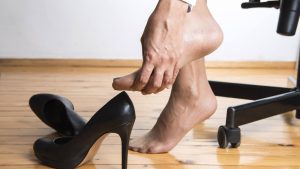 Who gets it & why?
Who gets it & why?
Bunions tend to develop more frequently in women, those with a family history of bunions, and older people. Sometimes this problem may also be associated with other medical or bio-mechanical problems like arthritis, neuromuscular disorders, gout, flat feet, etc. One of the most common modifiable factors that has been implicated in the development of this condition is ill-fit shoes, especially those with a narrow toe box or with high heels.
How to identify a bunion?
- A bony formation on the joint at the base of the big toe
- Inflammation, redness, tenderness near the bump of the toe
- Corns and calluses between the toes.
- Lingering pain in toes
- Experiencing stiffness in the affected toe
What if it is left untreated?
An untreated bunion can lead to many complications that one should not ignore. These are the following:
- Bursitis
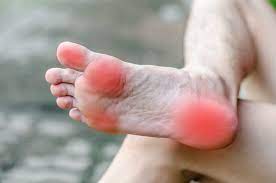
Bursae are sacs that provide cushioning to the joints. A bunion can cause inflammation in the sac present at the base of the big toe, which leads to a painful condition known as Bursitis.
- Metatarsalgia
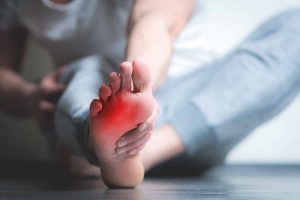
This medical condition leads to pain and inflammation under the ball of the foot, which leads to an inability to walk for long-distance
- Hammertoe
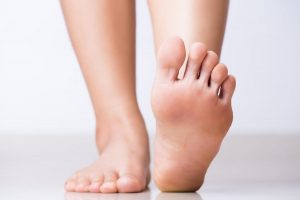
This foot condition usually affects the toe next to the big toe and develops corns or calluses, limiting its movement.
- Arthritis

Long-standing bunion deformities can lead to arthritis of the big toe joint thus leading to pain at rest as well.
Some tips that can help in preventing or treating a bunion
- Maintain your BMI
- Try ice packs and massage to alleviate pain
- Wear suitable shoes that have enough room for your toes
- Cover your bunion with a gel-filed pad
- Keep stretching your calf muscles as it reduces the pressure on the toes
So as we discussed a bunion, it is important to take care of the foot’s health and always wear comfortable pair of shoes to prevent the majority of foot problems. Moreover, don’t miss medical help and get treatment as soon as possible to avoid complications and surgery. For any foot problem in an advanced stage, surgical methods may be suggested to cure the problem. You can also consult Dr. Anuj Chawla, who is an experienced foot and ankle doctor in Gurgaon. He has more than fifteen years of experience and has helped many patients in foot pain treatment.

